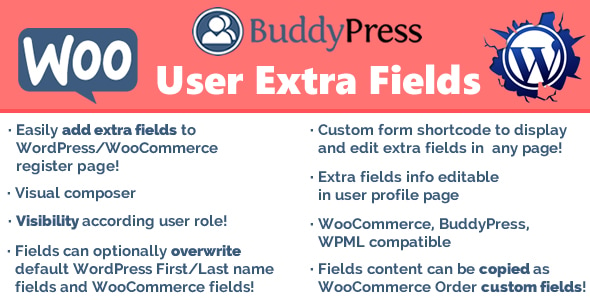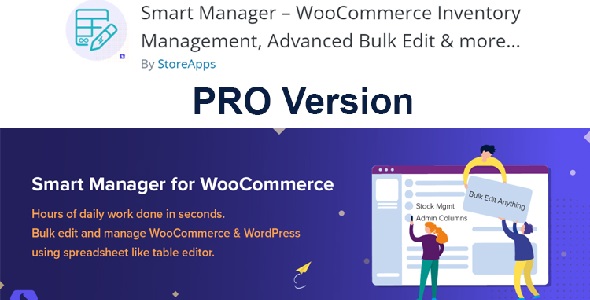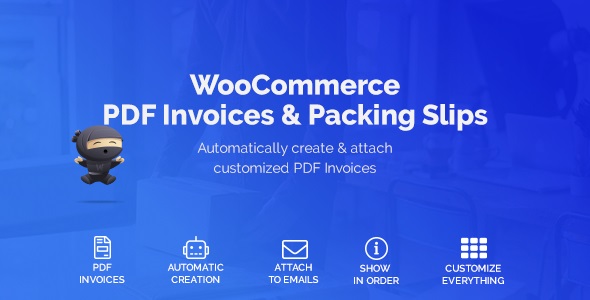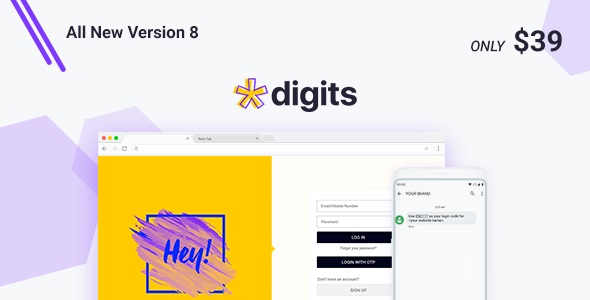User Extra Fields v16.8
The WordPress User Extra Field plugin expands user profile functionality by letting you add custom fields to user profiles. These extra fields can appear on the registration page, user account section, and other areas of your site. It integrates seamlessly with WooCommerce, BuddyPress, and WPML, offering compatibility across multilingual and community-oriented platforms.
To enable automatic updates, you can install the Envato Market plugin and follow the official setup guide available on the Envato website.
Admins can customize the user registration experience with ease, using a drag-and-drop interface to add various types of input fields. These include file upload, single-line text, text areas, numeric fields, email, website URL, date and time pickers, radio buttons, checkboxes, dropdowns, and even dynamic country and state selectors (specific to WooCommerce). Each field can be set as required or optional, and date/time fields come with user-friendly selectors for better accuracy.
File uploads are supported directly from registration and checkout pages, allowing users to attach documents or images to their profile. You can limit file sizes and restrict accepted formats. These files can be used for verification, onboarding, or documentation purposes.
Field visibility can be controlled based on user roles, giving you the flexibility to show or hide specific fields depending on the type of user interacting with your site.
User profiles in the admin dashboard are enhanced with the new custom fields, giving users and admins the ability to edit additional information directly from their profile pages.
You can also display custom field values in the user list or WooCommerce customer tables, with each field appearing in its own column for better data management.
WPML integration ensures that your extra fields are multilingual-ready. All labels and descriptions can be translated through the WPML String Translation menu.
WooCommerce compatibility is robust. Extra fields are automatically shown on the registration form and can be configured to appear on the “My Account,” “Billing Address,” or “Shipping Address” edit pages. The admin can also see this user information on the backend order details page, thanks to a dedicated meta box added alongside customer details.
During checkout, these extra fields can be shown and even made required. However, if guest checkout is enabled, these fields only appear when a user opts to create an account.
Admins can add custom HTML blocks before and after the checkout extra fields section, offering further flexibility in how content is presented on the checkout page.
It’s possible to transfer field data from the checkout to the order itself, by copying values into order metadata as custom fields. This ensures that order records retain the submitted information independently of user profile data. For uploaded files, deletion occurs when the order is removed or when the associated custom field is cleared.
The plugin also allows for syncing extra field data with default WooCommerce billing and shipping fields. Simply create a matching field and assign it to overwrite the corresponding WooCommerce field—this applies to text, email, and country/state inputs. Multiple fields can share values as well, such as syncing a single name input across billing and shipping names.
Extra user data can be optionally included in WooCommerce emails, allowing store admins or customers to view all relevant profile details at a glance.
Each custom field’s layout size can be defined—either as full width or half-width (left or right side). Note: this feature doesn’t apply to fields like “Country & State” or “Title,” which default to full width.
The plugin supports visual separators in the form of Title fields. You can format these using HTML tags like <h1> through <h6>, add custom margins, and assign unique CSS classes for styling purposes.
Password field behavior can be overridden to allow weak passwords. This option bypasses WooCommerce’s default strength requirements. The modified password field can appear on registration forms, checkout account creation, and optionally on the “My Account” page.
Full BuddyPress support is included. Custom fields are automatically added to the BuddyPress registration form and can appear in user profiles, where they can be edited from the user dashboard.
Admins can also create fields that are only editable by them. These admin-only fields are still visible to the user but locked from editing.
The plugin provides shortcodes to embed custom forms anywhere on the site. Use the [wpuef_extra_fields_custom_form field_ids=""] shortcode to show specific fields. For example, [wpuef_extra_fields_custom_form field_ids="c2,c5,c6"] displays only selected fields.
Field values can be shown on any page using another shortcode. For example, [wpuef_show_field_value field_id="c2"] displays the value for the current user. You can also specify a particular user by adding the user_id parameter. This shortcode supports wrapping content in HTML, including image tags or links.
Images uploaded via file fields can also be displayed with a dedicated shortcode. Use [wpuef_display_image field_id="c2" width="300" height="200"] to show an image with specified dimensions.
Developers can retrieve or save field values programmatically using plugin functions. The wpuef_get_field($field_id, $user_id) function returns all field data as an object. Use $result->value to get the specific user input. The wpuef_set_field($field_id, $value, $user_id) function allows saving values directly via custom code in themes or plugins.
The plugin also ensures proper file management. When a user is deleted, any files they uploaded through extra fields are automatically removed from the server.
Please note that WPUEF does not include a built-in feature for importing or exporting extra field data via CSV. To handle that functionality, you’ll need to use the WooCommerce Customers Manager plugin.

 My Account
My Account 







There are no reviews yet.